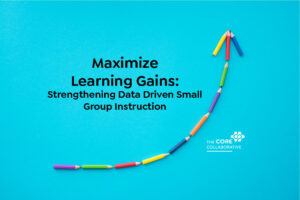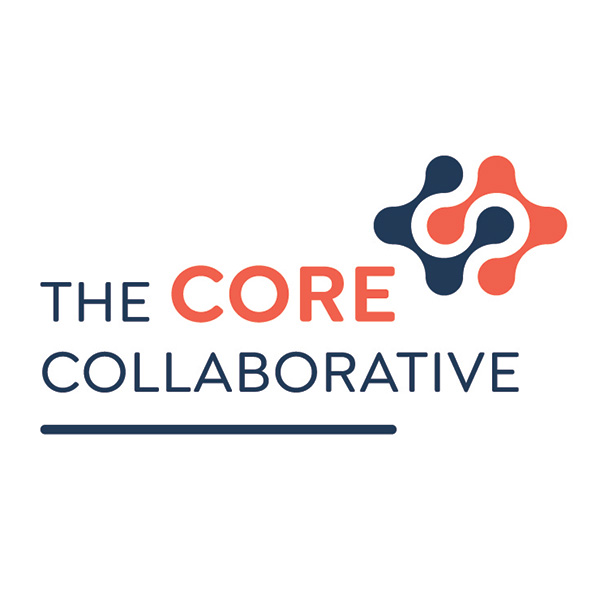In our dynamic educational landscape, differentiated small group instruction at all tiers of support is a vital practice for catering to diverse learning needs. By adapting teaching methods, materials, and assessments – differentiation in the instructional core promotes an inclusive environment where all students have equitable access to learning and the opportunity to succeed.
Impact Teams, or PLCs, can tailor their teaching strategies to meet students exactly where they are by leveraging formative evidence (exit slips, self-peer assessment, ungraded pop quizzes, etc). This helps prevent the development of significant learning gaps that might require more intensive interventions later.

Understanding Differentiated Instruction
Differentiated instruction is a teaching approach that involves modifying curriculum and teaching methods to accommodate the varying abilities and learning styles of students. It’s not about creating entirely separate lesson plans but about adjusting the pace, level, and method of instruction to suit different learners. Learning Stations involves setting up different areas in the classroom where students engage in various activities tailored to what they need.
For example, in a unit on algebra, each station could focus on a different aspect or level of difficulty:
- Station 1 (Basic): Focuses on simple linear equations. Students here might work on solving equations like x + 5 = 12
- Station 2 (Intermediate): Centers on more complex equations, possibly involving brackets, such as 2 (x-3) = 14
- Station 3 (Advanced): Challenges students with multi-step equations and real-world problems, like calculating the dimensions of a garden given a fixed perimeter.
Students rotate through the stations based on their current understanding and skill level, as determined by the most recent formative evidence. This approach allows students to engage with content at a pace and complexity that is appropriate for them, while also giving them the opportunity to stretch their understanding as they progress.
The Role of Formative Assessment
Formative assessments are ongoing evaluations used to understand students’ learning progress and needs. They can be informal, like class discussions and quizzes, or structured, like regular feedback sessions. The key is that they provide immediate insights into student understanding, allowing for timely adjustments in teaching strategies.
Implementing Differentiated Small Group Instruction:
- Collect and Analyze Evidence: Use screener data and formative assessment evidence to identify students’ strengths, weaknesses, and how they learn best. This evidence is crucial for forming effective small groups and planning explicit instruction.
- Form Small Flexible Groups: Based on assessment data, group students with similar learning needs. These groups should be fluid, allowing for changes as students grow and their needs evolve. Explicit or direct instruction has the potential to accelerate learning with a .59 Visible Learning effect size.
- Plan Targeted Lessons: Each group should know their group goals and they should co-construct success criteria with their teacher so they know what they need to do to be successful. Design lessons that address the specific needs of each group. This might involve varying the complexity of tasks, providing different resources, or adopting various teaching styles. Of course, your students need to practice to reach their goals. Deliberate practice has the potential to accelerate learning with a .86 Visible Learning average effect size.
- Monitor and Adjust: Make sure to collect baseline evidence so you know where you are starting from. You can create a mirrored Pre-Assessment to monitor growth. Use the same assessment pre and post, but make sure your students practice at least 3 weeks before the post. Continuously use formative assessment tools to gauge the effectiveness of your instruction and the progress of students. Be ready to adjust groups and teaching methods accordingly.
- Encourage Collaboration: While groups are differentiated, encourage a collaborative classroom culture where students can learn from and support each other. One way to build a culture of learning is to bring the groups together as a community to engage in group reflection.
- What did we learn today?
- What big or little mistakes helped us learn more?
- What is one thing we need to remember for learning later today and tomorrow?
- What is one little shift you can make so you are more successful?
Exploring the Benefits of Differentiated Instruction
- Enhanced Learning: Students receive instruction that is more closely aligned with their abilities, which can lead to better understanding and retention of material.
- Increased Engagement: When lessons cater to their learning preferences and levels, students are more likely to be engaged and motivated.
- Improved Self-Esteem: Tailored instruction can help students feel more confident in their abilities, fostering a positive attitude towards learning.
- Builds a Strong Foundation: Tier 1 instruction is the primary source of learning for all students. Differentiation in this tier ensures that every student builds a strong foundational knowledge, critical for their future academic success.
- Improves Classroom Management: When lessons are differentiated to meet the needs of all learners, students are less likely to become disengaged, bored, or frustrated leading to fewer behavioral issues in the classroom.
- Fosters a Growth Mindset: When students receive instruction tailored to their level, they are more likely to experience success, which fosters a growth mindset. They come to understand that effort and persistence, coupled with the right support, lead to improvement.
Making it Personal with Quality Differentiation
Differentiated small group instruction, guided by formative evidence, is a powerful approach to meet the diverse, personalized needs of learners. By continually assessing and responding to student needs, Impact Teams-PLCs can create a more dynamic, inclusive, and effective learning environment. The goal is not just to teach but to ensure that every student learns and thrives. As you refine your practice, check out this post on differentiation that includes some practical lesson plan templates from our friends at HMH. Happy planning!


